Your company is busy on any given day with customers coming and going and your staff attending to various tasks. Those managing your workforce need to assign shifts, find replacements for the person that called in sick or didn’t turn up, interview candidates, approve requests and changes and manage hours worked – the list of activities goes on.
Each day can feel frantic without the right solution to manage all these facets of your business.
What are the key functions of workforce management?
Workforce management or employee roster management is the efficient use of your organisation’s most important asset – its employees. It covers many activities, including scheduling, rostering, monitoring attendance, managing availability and forecasting future demand. These tasks can become tedious and are time-consuming when completed manually and can steal the valuable time of your HR and management teams. Workforce training software automates many of these otherwise manual processes and supports you by delivering reporting and analysis to the people that need it.
There are a few critical elements to workforce management:
- Forecasting and scheduling leverage historical company data and current trends to predict future demand and labour needs. You can leverage these suggestions when creating rosters to meet customer demand and maximise employee satisfaction and workforce productivity.
- Time and attendance solutions manage when employees clock in and out of work. They monitor attendance for the times they are rostered on and mitigate bad practices such as time theft and buddy punching. You can also integrate your time and attendance solution with your payroll software to ensure that everyone receives the right payment and any allowances they are entitled to for working overtime, etc.
- Employee self-service capabilities can deliver shift-specific messaging and general messaging options that enhance employee communications. Automation of shift bidding, swaps and acceptance can all be handled automatically and empower employees while providing timely outcomes for your business.
- Leave and availability management involves recruiting, training, upskilling and succession planning; it focuses on the employee journey, end to end. Talent management supports you in providing your team with an excellent employee experience by prioritising their development and preparing them to move into new roles. It also ensures you have the talent within your company to replace the skills lost when someone leaves the business.
- Workforce analytics tells your company’s story through reports on productivity, employee engagement, turnover, skills gaps and forecasting future demand.
What makes workforce management so critical?
The last few years have seen a great change in workplaces worldwide. Lockdowns and unplanned absences have forced businesses to accommodate the latest regulations—surges of activity when these lockdowns have ended demonstrated the need for preparedness. Even under regular circumstances, markets change, customer demand spikes and workers move in and out of your organisation.
Workforce management supports you in meeting such changes and ensuring you have the right people in the right place at the right time. You can improve employee productivity, customer satisfaction, and operational efficiency by properly managing the workforce. All of these contribute to driving positive impacts on your bottom line.
What does workforce management achieve?
Workforce management delivers significant benefits, including:
- Improved communication and collaboration: It enhances communication between employees and managers. By providing a clear and concise way to manage employee schedules, time off, and workloads, workforce management ensures everyone is on the same page. This leads to increased productivity and decreased frustration among employees.
- Optimise workforce costs: By carefully managing employee hours and scheduling, you can avoid overstaffing and minimise overtime expenses.
- Improve the employee experience: When you have the right number of people working to meet customer demand, employee satisfaction can increase because people do not feel stretched thin. Workforce management can also help you improve employee retention by enabling you to identify gaps and development opportunities and enable people to advance within the company.
- Deliver better service quality and customer experience: By managing your workforce, you can ensure that your employees are properly trained and have the necessary skills to provide excellent service. In addition, workforce management can help you identify and address problems before they impact customers.
- Reduce the impact of absenteeism and staff shortages: While absenteeism is a fact of life, it can harm your business if you lack the tools to manage it properly. Workforce management helps you fill shifts when employees cannot come to work and ensures that you do not have an issue with staff shortages if customer demand has spiked.
- Meet compliance requirements: Australian companies must meet and comply with the regulations set by the Fair Work Ombudsman (FWO). Failing to comply with these requirements results in heavy fines and damages your business’ reputation. Workforce management includes the tools you need to ensure you comply with the legislation.
What workforce management software should include
When choosing the right workforce management solution for your business, there are several key features you should look for.
- An excellent user experience should be high on your list of priorities. When people use an app every time they are at work or planning their schedule, they want to use something that is accessible and has an intuitive user interface.
- Self-service is crucial to providing employees with an excellent experience. Self-service options allow people to review their roster and timesheets, request leave, swap shifts, review important documents and even clock in from their mobile phones.
- Reporting capabilities are critical to just about every facet of your company. You can leverage historical data to inform decision-making and ensure your company operates as it should. When you can generate reports on employee performance and attendance, product sales, and customer activity, you can bring data-driven insights to improving your business operations.
- Award interpretation: Award interpretation is the process of understanding and applying the terms of an employment agreement or award. This can be a complex task, as many awards often apply to different employees.
When considering a workforce management solution, look for these key features. By doing so, you can be sure that you are getting a solution that will meet the needs of your business and help you improve your bottom line.
Tambla’s workforce management solutions
A comprehensive strategic workforce management solution is critical to improving productivity and your bottom line. The right platform can help you with workforce scheduling, forecasting and talent management. So you can optimise growth and plan for success today, tomorrow and in the future.
Visit our Workforce Management and workforce management tools page for more on our capabilities.




